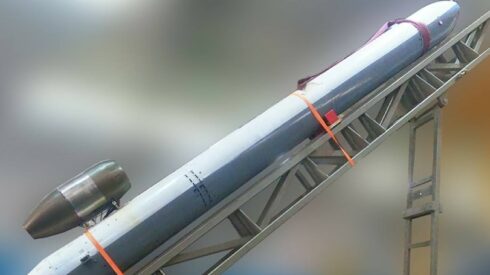Iran has transferred long-range missiles to allied armed factions in neighboring Iraq over the past week, The Times of London reported on April 8.
Citing regional intelligence sources involved in monitoring the Iran-Iraq border, the British news outlet said that the Aerospace Forces of the Islamic Revolutionary Guard Corps transferred missiles that could reach as far as Europe, as well as shorter-range Quds 351 cruise and Jamal 69 ballistic missiles.
Iran makes several Quds-type cruise missiles with ranges from 700 to 2,000 kilometers. Meanwhile, the Jamal 69, a derivative of the Iranian Fateh-110 ballistic missile, is said to have a range of at least 700 kilometers.
The Times of London’s sources didn’t provide any details on the long-range missiles allegedly supplied by Iran. However, one of the sources told the outlet that the missiles had never before been given to Iraqi armed factions.
“It’s a desperate move by the Iranians, risking the stability of Iraq,” said the source.
The report came after Reuters reported on April 7 that several powerful Iran-allied armed factions in Iraq had agreed to disarm for the first time to avert the threat of an escalating conflict with the administration of United States President Donlad Trump.
The news agency cited six commanders from the Kataib Hezbollah, Nujabaa, Kataib Sayyed al-Shuhada, and Ansarullah al-Awfiyaa groups. These factions are part of the Islamic Resistance in Iraq (IRI), an umbrella group of Iran’s allies in Iraq with some 50,000 fighters and a massive arsenal.
However, Arab media later in the week quoted an Iraqi political source as saying that the armed factions had refused to disarm.
“The efforts seen in the last 48 hours to create a picture that the militias are disarming is a ruse,” a regional diplomatic source told the Times of London.
The source went on to claim that the factions were “concerned about internal Iraqi opposition” that was wary of playing host to an Iran-alliance state-within-a-state similar to Hezbollah in Lebanon.
“There are discussions in Iraq, among politicians but also in the public sphere on social media, against importing Iran’s problems to their home turf,” said the source. “They look at Lebanon and are actively trying to avoid that.”
U.S. and Israeli troops were killed last year in attacks carried out by the IRI in response to the war on the Gaza Strip. Following a serious threat from Israel in November, the factions halted all operations.
Now, Iraqi armed factions are once again at the crosshair as the U.S. up the pressure on Iran to reach a new nuclear agreement.
In recent weeks, the Trump administration bolstered U.S. forces in the Middle East and resumed strikes on the Iran-alliance Houthis in Yemen. Israel also renewed its offensive against Hamas in Gaza and stepped up strikes on Hezbollah in Lebanon. Next, the U.S. and Israel may move to pressure Tehran by targeting the IRI.
_______________________________________________________________________________________________________________________
SouthFront: Analysis and Intelligence
NOW hosted at southfront.press
Previously, SouthFront: Analysis and Intelligence was at southfront.org.
The .org domain name had been blocked by the US (NATO) (https://southfront.press/southfront-org-blocked-by-u-s-controlled-global-internet-supervisor/) globally, outlawed and without any explanation
Back before that, from 2013 to 2015, SouthFront: Analysis and Intelligence was at southfront.com






